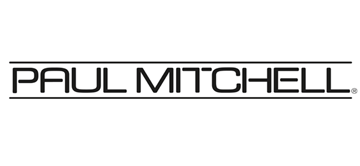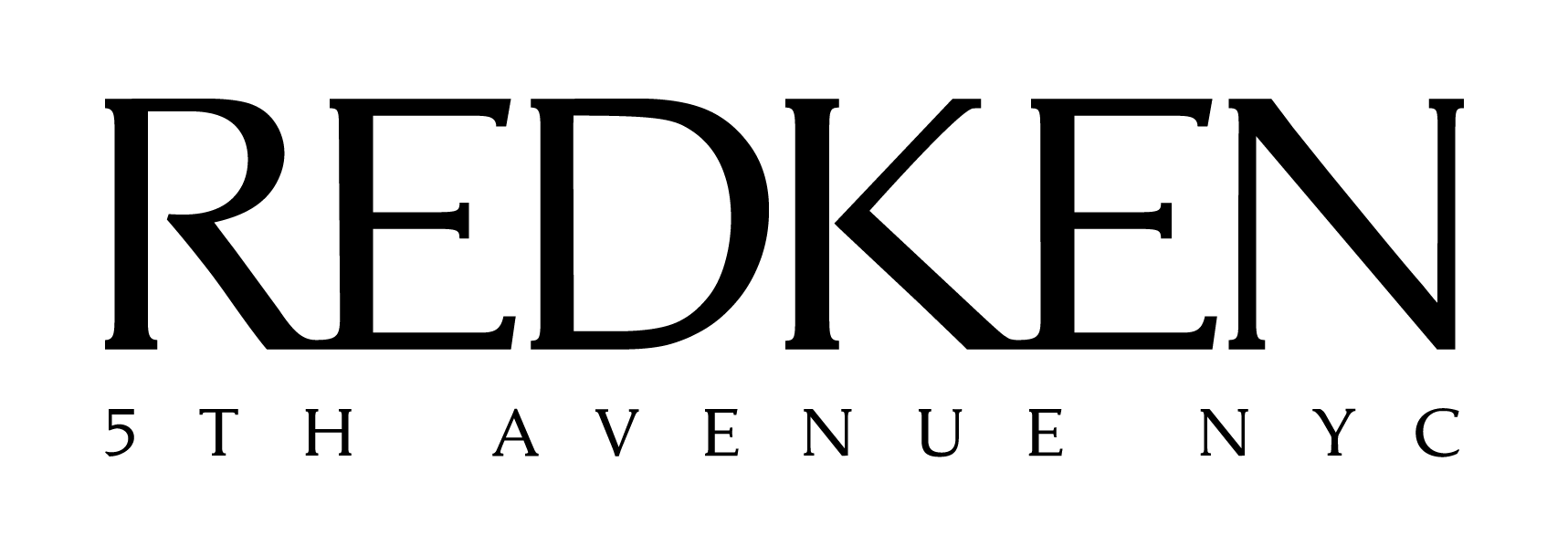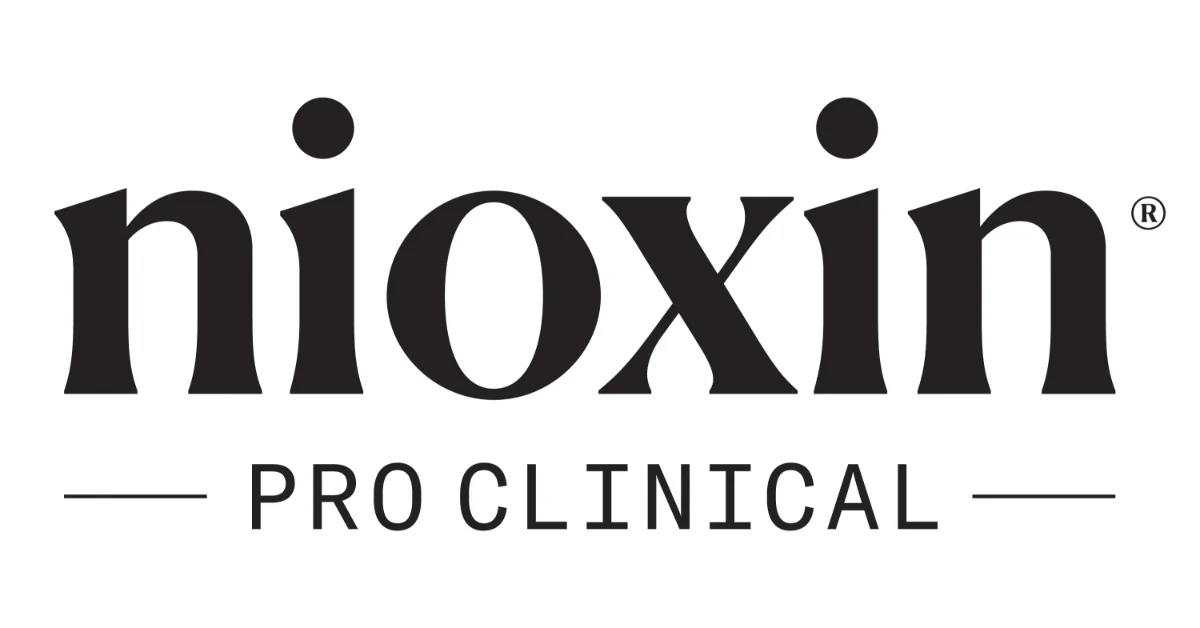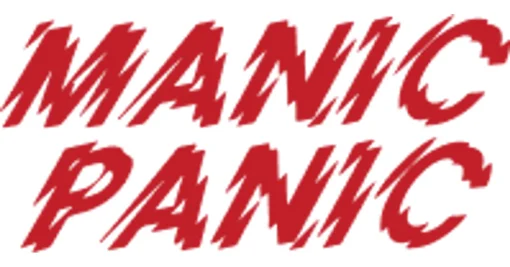FAQs, Hair Treatments, Hare Care
How do I protect my hair from heat damage?
Ever wondered why your hair gets brittle after using styling tools? Many overlook the need to prevent heat damage in our hair care routines. With more people using heat styling tools, it’s vital to protect our hair. We can look into effective ways and products to keep our hair healthy and lively. Let’s dive into why heat harms our hair and how to make it stronger.
Key Takeaways
- Understanding the impact of heat on hair health is essential for prevention.
- We must incorporate quality heat protection products into our routine.
- Best practices for heat styling can significantly reduce damage.
- Nourishing our hair through daily care can aid in recovery and prevention.
- Exploring natural alternatives can provide a break from heat styling.
Understanding Heat Damage on Our Hair
It’s important to know about heat damage to keep our hair healthy. This problem happens when too much heat harms our hair’s outer layer and breaks down its proteins, especially keratin. Spotting heat damage early helps us look after our hair better.
What Is Heat Damage?
Heat damage comes from often using hot tools for styling. Tools like straighteners and curling wands may make our hair look good but can also harm it a lot.
Symptoms of Heat Damage
We should know the signs of heat damage so we can fix them quickly. These signs are:
- Split ends
- Rough or dry texture
- Difficulty in styling
- Lack of shine and elasticity
Seeing any of these signs means our hair needs more care to be healthy.
Why Is Our Hair Vulnerable to Heat?
Our hair gets easily damaged by heat because of how it is made. Too much heat dries it out and breaks its inner bonds. This leaves our hair at risk, especially without protection.
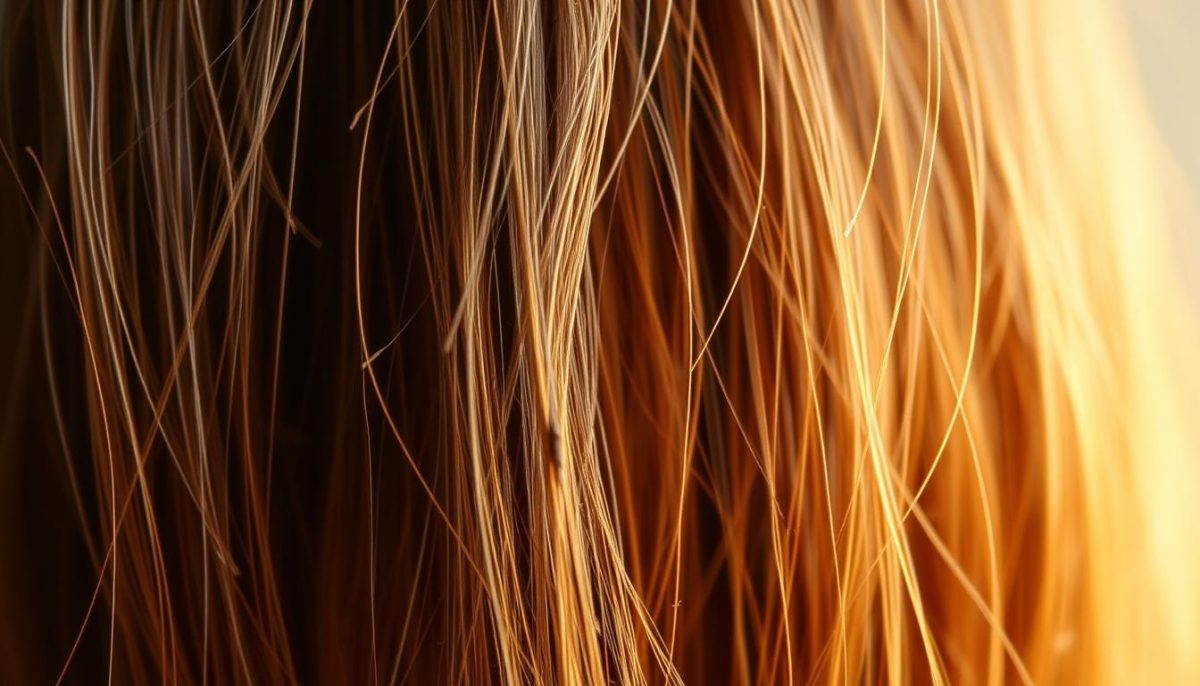
Different Types of Heat Treatments
Heat treatments are key for getting the hair style we want. Blow drying, straightening, and curling are really popular. Each method has its own way but can damage hair if not done right.
Blow Drying
Blow drying makes drying hair fast and adds volume. It’s perfect when we’re in a hurry. Using a good blow dryer with adjustable heat helps keep our hair healthy while styling.
Straightening
Flat irons are great for getting smooth, sleek hair. But, they can also cause damage if we’re not careful. Picking the right temperature and using a heat protectant reduces the risk of harming our hair.
Curling
Curling wands help make lovely curls. It’s important to use them at the right temperature. Using too much heat can damage the hair, so taking breaks is a good idea to keep our hair looking good.
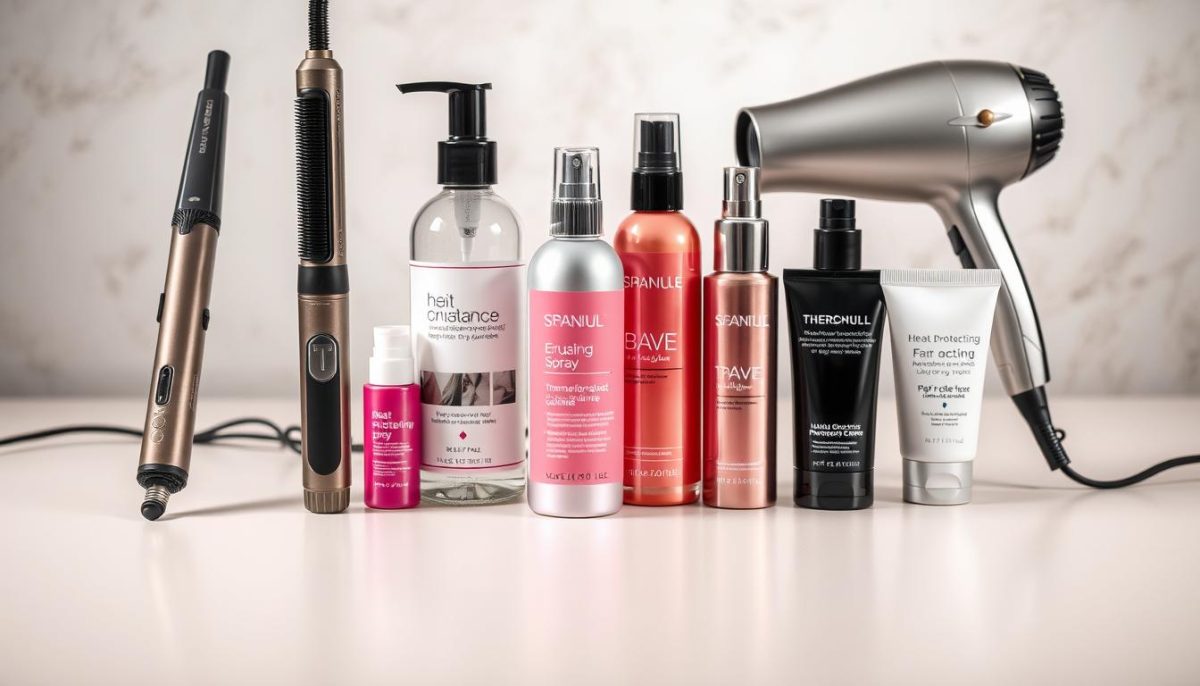
The Importance of Heat Protection Products
Using heat tools for styling our hair is common. To avoid damage, it’s key to use heat protectants. These products act as a shield, lowering the risk of heat harm.
What Are Heat Protectants?
Heat protectants are made to protect our hair from the bad effects of heat styling. They form a protective layer. This keeps moisture in and protects the hair cuticle from high heat. Using them helps keep our hair healthy, even when using blow dryers, straighteners, and curling irons.
Key Ingredients to Look For
To get the most from heat protectants, choosing the right ingredients matters. Silicones like dimethicone are great for shielding the hair. Hydrolyzed proteins, such as wheat or keratin, help with strength and repair. Also, ingredients like glycerin are good for keeping hair moist.
How to Choose the Right Product for Our Hair
Finding the best heat protectant depends on our hair type and what styles we want. For fine hair, go for lightweight options. Those with thick or coarse hair should look for stronger products. Always check labels for heat protection levels and benefits that fit your hair type. This way, we can keep our hair looking good.
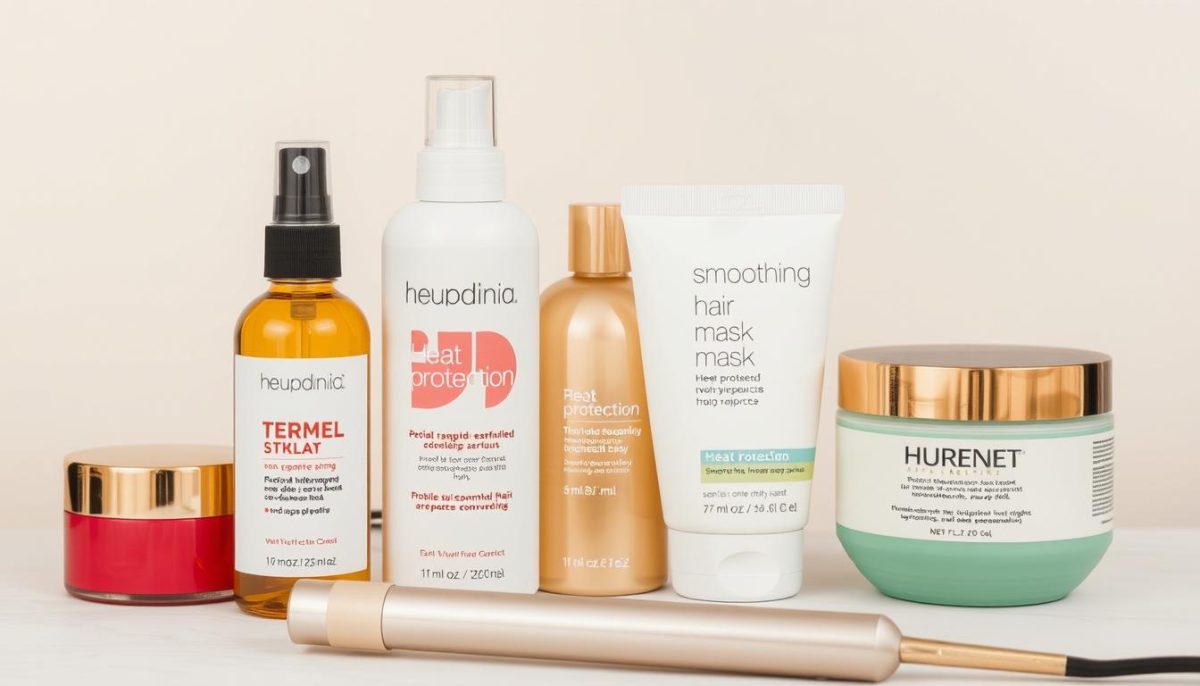
Best Practices for Heat Styling
Exploring heat styling methods, it’s crucial to prepare our hair well to avoid damage. Before we start styling, there are vital steps to protect our hair. These steps ensure we face fewer heat-related problems.
Preparing Our Hair Before Styling
Getting our hair ready is super important. We must wait for our hair to be almost fully dry, at least 90%, before using heat. Wet hair gets damaged easily. Letting it air dry or using a blow dryer’s cool setting can help a lot. A quality heat protectant spray adds protection against heat damage.
The Right Temperature Settings
Choosing the right temperature for our hair is crucial. Different hair types need different heat levels. Thin hair does better with low heat, around 150-170°C. But, thick or coarse hair can handle more heat, about 180-210°C. We need to adjust our styling tools to keep our hair healthy and get the look we want.
Timing and Technique: Do’s and Don’ts
How long and how we use our styling tools affects our hair’s health and look. Don’t hold tools too close to your hair to avoid burns. We need to keep a bit of distance for even heat spread. Also, don’t overdo the styling. Too much can harm our hair. With the right techniques, we can keep our hair vibrant and strong.
Natural Alternatives to Heat Styling
Looking for healthier hair options means finding alternatives to heat styling. Choosing to air dry is kinder to your hair, keeping it moist and healthy. There are many ways to get creative with your hair without using heat.
Air Drying Techniques
Air drying is a good choice for hair care without heat damage. Start by pressing out extra water gently and use a leave-in conditioner. To bring out curls or waves, a curl cream can make your natural texture stand out. Here’s how to air dry the right way:
- Pat hair gently with a soft towel rather than rubbing.
- Use wide-toothed combs to detangle wet hair.
- Divide hair into sections to ensure an even drying process.
Hair Styling Tools That Don’t Use Heat
There are many tools for styling hair beautifully without heat. Foam curlers can create soft curls while you sleep. Braids let you add waves or texture as your hair dries. You can also try:
- Twist-outs, offering defined curls without damage.
- Buns or knots for sleek styles during the drying process.
- Headbands to create waves by wrapping hair around them.
Embracing Natural Textures
It’s important to let your natural hair texture shine. This way, you keep your hair healthy and avoid damage from styling tools. Celebrating our natural look opens up new ways to style our hair and boosts its natural beauty. Let’s cherish our unique textures!
Tips for Daily Hair Care
Keeping our hair healthy means putting in some daily effort. If we include a few key actions in our day, we can boost the moisture, shine, and strength of our hair. Let’s dive into some top tips that really change the game for hair health.
Hydration and Moisture Retention
For gorgeous hair, hydration is key. Moisturising with products like conditioners or leave-in treatments helps keep it hydrated all day. Choose products with natural ingredients for gentle yet effective care. This approach helps avoid dry and brittle hair, leaving it looking lively instead.
Regular Trims for Healthy Ends
Getting our hair trimmed regularly is crucial for its best look. Cutting off split ends wards off more damage and keeps hair looking healthy. Just a quick trip to the salon every 6 to 8 weeks can make our hair vibrant and strong.
Nutritional Considerations for Healthy Hair
What we eat is vital for hair health. A diet with plenty of vitamins, minerals, and proteins gives our hair what it needs to thrive. Including healthy fats from foods like avocados and fish helps our hair stay moisturised from the inside out. This keeps our locks well-nourished.
Styling Tools: Our Best Friends or Foes?
The tools we choose for styling our hair matter a lot. They affect how our hair looks and feels. By picking the right tools, we can keep our hair looking great without hurting it. It’s also key to keep these tools clean and opt for modern ones that are kinder to our hair.
Evaluating the Tools We Use
Quality matters when it comes to hair tools. Good ones don’t just make our hair look good. They also protect it from too much heat. We need to look for tools that heat up evenly and let us control the temperature. Learning about our tools helps us take better care of our hair.
Cleaning and Maintaining Our Tools
Keeping our styling tools clean is a must. It stops product buildup which can harm our hair when we heat style it. Just a quick wipe of our straighteners or curlers after each use can make them last longer. And it keeps our hair healthier too.
Upgrading to More Efficient Tools
Modern tools like those made from ceramic or titanium are way better for our hair. They get hot quick but can be used at a lower heat. This means less damage to our hair. Choosing to upgrade our tools can make styling our hair safer and more enjoyable.
Importance of Regular Hair Treatments
For healthy hair, regular treatments are key to keep it vibrant. Often, our hair needs more than a quick condition. Adding deep conditioning and hair masks to our routine brings back moisture and strength.
Deep Conditioning Methods
Deep conditioning goes deep into the hair, providing essential moisture and proteins. Adding these treatments weekly helps keep our hair moist and strong. Brands like Olaplex and Aussie have products that make it easy.
Hair Masks for Extra Nourishment
Hair masks offer a big boost of nourishment. Using a mask once a week fights dryness and brings back shine. Try the L’Oreal Paris Elvive Extraordinnaire Mask or Moroccanoil Intense Hydrating Mask for deep moisture.
The Role of Oils in Hair Care
Adding oils like argan or coconut oil boosts our hair treatment. These oils increase moisture and help lock in shine while protecting from heat. Including oils in our routine adds extra protection and promotes healthy hair.
How to Repair Heat-Damaged Hair
To fix heat-damaged hair, we need good treatments and to keep caring for it. We can look at both salon services and simple things we can do at home to make our hair healthy and lively again. It’s important to be patient and consistent, trying different methods.
Treatments for Restoring Health
We have many choices for fixing damaged hair. Salons offer special treatments that really focus on deep conditioning and making the hair structure stronger. Stylists use top-notch products that go deep into the hair, helping to fix and rebuild it. This care can make a big difference, helping our hair fight off damage in the future.
Professional Salon Services
Going to a salon means we get expert tips and can try out top treatment methods. Many salons have options like:
- Deep conditioning treatments
- Keratin smoothing treatments
- Bond-building services
Each treatment tackles problems from heat damage, making our hair look and feel better. Choosing these salon services can be a smart move for our hair’s health.
At-Home Remedies We Can Try
We can also fix damaged hair with treatments at home. Using simple stuff like honey, avocado, and eggs, we can make hair masks that work well. These natural treatments help keep moisture in and nourish our hair, letting it get better over time. Doing these home treatments, along with salon visits, helps keep our hair strong and shiny.
| Treatment Type | Benefits | Best For |
|---|---|---|
| Salon Services | Deep conditioning, structural repair | Severely damaged hair |
| At-Home Remedies | Natural nourishment, moisture retention | Mild damage |
| Combination Approaches | Ongoing care and improvement | All hair types |
Lifestyle Changes for Hair Health
Making changes to our lifestyle can really help our hair become healthier. By focusing on reducing stress, getting good sleep, and drinking plenty of water, we create a great space for our hair to grow well. Let’s look at these areas and understand their impact on keeping our hair strong and vibrant.
Reducing Stress for Better Hair
Too much stress can cause more hair to fall out and slow down its growth. Doing things to lower stress, like yoga, meditation, or just relaxing, is really good for us. These activities don’t just help our minds relax; they also help our hair become healthier.
The Role of Sleep in Hair Recovery
Getting enough sleep is very important for our hair’s health. While we sleep, our body fixes and renews cells. Making sure we get a lot of good sleep helps our hair roots become stronger, giving us healthier hair. A regular sleep pattern makes a big difference in our hair’s appearance.
Staying Hydrated: Drink More Water
Drinking enough water is crucial for keeping our hair flexible and preventing it from breaking. Having enough water every day lets our body keep the right moisture levels, so our hair stays shiny and strong. Eating foods rich in water, like fruits and veggies, also helps with staying hydrated.
Seasonal Hair Care Tips
As seasons change, we need to adjust how we look after our hair. In summer, the sun and humidity can make our hair frizzy and dry. We can help our hair by following summer care tips. When it gets cold, the lack of moisture in the air can dry out our hair. Knowing how each season affects our hair helps us keep it healthy and looking its best all year.
Protecting Our Hair in Summer
- Wear a wide-brimmed hat to shield our hair from harmful UV rays.
- Use lightweight, anti-frizz serums that provide moisture without weighing hair down.
- Opt for chlorine-free swimming products if we plan to take a dip in the pool.
Winter Care: Avoiding Dryness
- Incorporate thicker conditioners and oils that provide deep hydration.
- Limit hot showers, as they can strip hair of its natural oils.
- Use a humidifier indoors to maintain moisture levels in the air.
The Impact of Humidity on Our Hair
Humidity affects how our hair looks and feels. It can cause frizz, especially in curly or textured hair. Using products for humid weather, like smoothing creams or sprays, helps manage this. Knowing how humidity impacts our hair lets us keep it looking great with the right seasonal hair care strategies.
Hair Colour and Heat Protection
Thinking of changing your hair colour? It’s key to see how it impacts your hair’s health and strength. Hair dye can make you look great, but it also needs careful looking after, especially with heat styling. Picking colours that work well with what our hair is like naturally helps avoid damage. And using the right heat protection keeps coloured hair safe from heat problems.
Choosing the Right Colour with Heat in Mind
Choosing a colour close to our natural one means less stress on our hair when colouring. Warm shades often need less bleaching, which is gentler on our hair. Getting advice from professionals who know our hair type helps find the best colour. This way, we avoid damage and keep our hair looking bright.
How Colouring Affects Hair Strength
Colour treatments look great but they can make our hair weak to heat damage. The chemicals used in dyes can take away natural oils and dry out our hair. To fight this, using conditioning masks and treatments for coloured hair is key. This helps make our hair strong and better at dealing with heat.
Protective Measures for Coloured Hair
It’s vital to use heat protection to keep coloured hair looking bright and undamaged. We need to pick protectants made for colour-treated hair, which protect against high heat. These products help keep the colour and nourish our hair too.
Adding this to our daily routine keeps our hair healthy and shining.
By taking these steps, we can rock our favourite hair colours without worrying about damage from heat styling. This keeps our hair healthy and safe.
Common Myths About Heat Styling
Many believe things about heat styling that aren’t true, leading us down the wrong path in haircare. It’s vital to know the truths to protect our hair better. Let’s debunk some myths and see how they really affect our hair.
Myth: Heat Protectants Are Unnecessary
Some think protecting our hair from heat isn’t needed. But heat protectants are crucial. They shield our hair from damage. Remember, unprotected hair faces a higher risk of getting damaged.
Myth: Higher Heat Means Better Results
There’s a myth that hotter irons style better. But lower heat can also achieve great results without harming our hair. Knowing this helps us style safely and wisely.
Myth: Hair Can’t Suffer from Heat Damage
Believing hair can handle any heat is wrong. Hair is actually quite fragile and can be damaged. Realizing this shows the importance of careful styling and protection.
Importance of Professional Advice
Getting tips from a hair expert is really helpful. When we visit a good hairdresser, we get advice that fits our hair type and issues. They help us pick the right products and styles for us.
Consulting a Hairdresser
Talking to a hairdresser has big benefits. They check out our hair and suggest the best styles and treatments for us. This helps our hair stay healthy and avoids things that could make it worse.
Getting Personalised Recommendations
Advice from a hairdresser helps us choose the right stuff for our hair. They recommend things like special shampoos and oils to make our hair look great. This way, our hair shows its best side.
Following Trends Responsibly
When looking at new hair trends, it’s important to be careful. Using tips from our hairdresser helps us try new looks that are good for our hair. Making smart choices keeps our hair healthy.
Building a Sustainable Hair Care Routine
Starting a sustainable hair care routine means knowing what our hair needs. Each person’s hair is unique, with its own texture and styling preferences. Understanding these helps us reach our hair health goals.
Understanding Our Hair Needs
We need to take time to figure out what our hair really needs before starting a new routine. This might involve figuring out if our hair is dry, oily, or a mix. It also includes seeing how it reacts to different products and styles. Knowing our hair type is key to choosing the right products and methods that are good for the environment.
Incorporating Healthy Practices Over Time
Making small changes can greatly improve our hair care routine. Instead of big changes, we can slowly start healthier habits. This includes using less heat on our hair and choosing better products. Taking it slow helps our hair get used to these better practices.
Setting Realistic Goals for Our Hair
Keeping an eye on our progress is important for our hair’s health. Setting realistic goals helps us see our progress and keeps us going. This could mean aiming for longer hair, shinier hair, or just keeping it healthy. Having clear goals helps us stick to good hair care habits.
Conclusion: Embracing Healthy Hair Practices
To wrap up our talk about heat damage, it’s crucial to follow healthy hair habits. These habits keep our hair strong and full of life. We learned how important it is to use heat protectants, stick to a good hair care routine, and get regular treatments that fit our hair type. Adding these habits into our daily routine helps protect our hair from damage and keeps it healthy in the long run.
We suggest trying out different methods and products to make our hair care fun and informative. By tailoring our routines, we can discover what’s best for our hair. This helps us find new ways to care for our hair while keeping it healthy and looking great.
In the end, being dedicated to healthy hair means we can look forward to having strong, beautiful hair. Let’s keep learning and making smart choices for our hair’s health. This way, we celebrate our hair’s natural beauty while taking good care of it.

